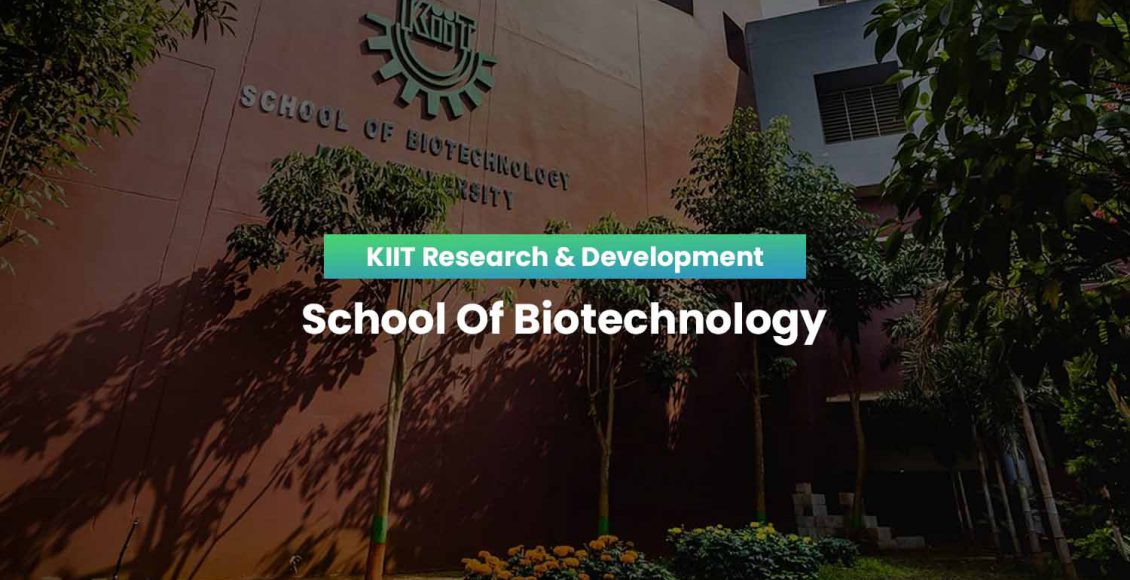School of Biotechnology (Aug – Sep 2022)
Journal Papers
- Paine, S. K., Rout, U. K., Bhattacharyya, C., Parai, D., Alam, M., Nanda, R. R., Tripathi, D., Choudhury, P., Kundu, C. N., Pati, S., Bhattacharya, D., & Basu, A. (2022). Temporal dynamics of oropharyngeal microbiome among SARS-CoV-2 patients reveals continued dysbiosis even after Viral Clearance. NPJ biofilms and microbiomes, 8(1), 67. https://doi.org/10.1038/s41522-022-00330-y
Abstract
The severe acute respiratory syndrome coronavirus-2 (SARS-CoV-2) pandemic has posed multiple challenges to global public health. Clinical features and sequela of SARS-CoV-2 infection include long-term and short-term complications often clinically indistinguishable from bacterial sepsis and acute lung infection. Post-hoc studies of previous SARS outbreaks postulate secondary bacterial infections with microbial dysbiosis. Oral microbial dysbiosis, particularly the altered proportion of Firmicutes and Proteobacteria, has shown to be associated with increased morbidity and mortality. Oropharynx and lung share similar kinds of bacterial species. We hypothesized that alteration in the Human Oropharyngeal Microbiome in SARS-CoV-2 patients can be a clinical indicator of bacterial infection related complications. We made a longitudinal comparison of oropharyngeal microbiome of 20 SARS-CoV-2 patients over a period of 30 days; at three time points, with a 15 days interval; contrasting them with a matched group of 10 healthy controls. Present observation indicates that posterior segment of the oropharyngeal microbiome is a key reservoir for bacteria causing pneumonia and chronic lung infection on SARS-CoV-2 infection. Oropharyngeal microbiome is indeed altered and its α-diversity decreases, indicating reduced stability, in all SARS-CoV-2 positive individuals right at Day-1; i.e. within ~24 h of post clinical diagnosis. The dysbiosis persists long-term (30 days) irrespective of viral clearance and/or administration of antibiotics. There is a severe depletion of commensal bacteria phyla like Firmicutes among the patients and that depletion is compensated by higher proportion of bacteria associated with sepsis and severe lung infection from phyla Proteobacteria. We also found elevated proportions of certain genus that have previously been shown to be causal for lung pneumonia in studies of model organisms and human autopsies’ including Stenotrophomonas, Acenetobactor, Enterobactor, Klebsiella and Chryseobacterium that were to be elevated among the cases. We also show that responses to the antibiotics (Azithromycin and Doxycycline) are not uniform for all individuals.
- Lavudi K, Harika VS, Kokkanti RR, Patchigolla S, Sinha A, Patnaik S & Penchalaneni J (2022). 2-Dimensional in vitro culture assessment of ovarian cancer cell line using cost effective silver nanoparticles from Macrotyloma uniflorum seed extracts. Front Bioeng Biotechnol. Aug 16;10:978846. doi: 10.3389/fbioe.2022.978846.
Abstract
Our research focused on generating AgNPs using Macrotyloma uniflorum (MU) seed extracts and studied their efficacy in combating tumor growth using the 2-Dimensional method for ovarian cancer cell line-PA-1. Characterization studies including a UV-visible spectrophotometer confirmed the surface plasmon resonance peak of 436 nm. Particle size determination data validated the nanoparticle diameter of 91.8 nm. Synthesized AgNPs possess a negative charge of -28.0 mV, which was confirmed through the zeta potential study. Structural characterization studies including XRD determined the crystal phase of AgNPs at four distant peaks at 2θ (38.17, 44.36, 64.52, and 77.46) and were assigned to 111, 200, 220, and 311 planes of the FCC. FTIR studies have confirmed the presence of O-H, N-H, C=O, ethers, C-Br, and C-I groups in AgNPs respectively. DPPH study has confirmed the presence of free radicles and we observed that at 500 μg/ml concentration, 76.08% of free radicles were formed which shows their efficiency. MTT assay shows the efficacy of MU-AgNPs in reducing the cell viability. At lower concentrations of MU-AgNP, 66% viability was observed and 9% of viability was observed at higher dose. ROS production (21%) was observed using MU-AgNPs with respect to 0.45% in controls, which affirms the capacity to induce DNA damage via apoptosis. Standard drug camptothecin generated 26% of ROS production which confirms higher potential of AgNPs in inducing DNA damage in tumor cells without causing lethality to the healthy cells. Further, the Fluorescence-activated cell sorting (FACS) study using a standard Caspase-3 marker confirms the generation of apoptotic bodies using two different concentrations of MU-AgNPs. At 40 μg, 64% of apoptotic cell death was observed, whereas, using 20 μg, 23% of apoptosis was recorded via fluorescent intensity. Propidium iodide-based Cell cycle study has shown a significant decrease in G0/G1 phase compared to control (88.8%), which further confirmed the apoptotic induction. Matrix metalloproteinases (MMP) studies using JC-1 dye, showed a significant increase in green fluorescence owing to lowered membrane potential, thus ensuring the breakdown of mitochondrial potential compared to untreated and standard drugs. With the obtained results, we are concluding that MU-AgNPs has a tremendous capacity to suppress the ovarian cancer cell proliferation in vitro by inducing DNA damage and apoptosis.
- Chatterjee, S., Dhal, A. K., Paul, S., Sinha, S., Das, B., Dash, S. R., & Kundu, C. N. (2022). Combination of Talazoparib and Olaparib enhanced the Curcumin-mediated apoptosis in oral cancer cells by PARP-1 trapping. Journal of cancer research and clinical oncology. https://doi.org/10.1007/s00432-022-04269-7
Abstract
Inhibition of Poly (ADP-ribose) Polymerases (PARP) results in blocking of DNA repair cascades that eventually leads to apoptosis and cancer cell death. PARP inhibitors (PARPi) exhibit their actions either by inhibiting PARP-induced PARylation and/or by trapping PARP at the DNA damage site. But, the mechanism of PARPi-mediated induction of cellular toxicity via PARP-trapping is largely unknown. The cellular toxicity of PARPi [Talazoparib (BMN) and/or Olaparib (Ola)] was investigated in oral cancer cells and the underlying mechanism was studied by using in vitro, in silico, and in vivo preclinical model systems. The experimental data suggested that induction of DNA damage is imperative for optimal effectiveness of PARPi. Curcumin (Cur) exhibited maximum DNA damaging capacity in comparison to Resveratrol and 5-Flurouracil. Combination of BMN+Ola induced cell death in Cur pre-treated cells at much lower concentrations than their individual treatments. BMN+Ola treatment deregulated the base excision repair (BER) cascade, potentiated PARP-trapping, caused cell cycle arrest and apoptosis in Cur pre-treated cells in a much more effective manner than their individual treatments. In silico data indicated the involvement of different amino acid residues which might play important roles in enhancing the BMN+Ola-mediated PARP-trapping. Moreover, in vivo mice xenograft data also suggested the BMN+Ola-mediated enhancement of apoptotic potentiality of Cur. Thus, induction of DNA damage was found to be essential for optimal functioning of PARPi and BMN+Ola combination treatment enhanced the apoptotic potentiality of Cur in cancer cells by enhancing the PARP-trapping activity via modulation of BER cascade.
- Paul, S., Sinha, S., & Kundu, C. N. (2022). Targeting cancer stem cells in the tumor microenvironment: An emerging role of PARP inhibitors. Pharmacological research, 184, 106425. https://doi.org/10.1016/j.phrs.2022.106425
Abstract
Cancer stem cells (CSCs) constitute a small population of cancer cells in the tumor microenvironment (TME), which are responsible for metastasis, angiogenesis, drug resistance, and cancer relapse. Understanding the key signatures and resistance mechanisms of CSCs may help in the development of novel chemotherapeutic strategies to specifically target CSCs in the TME. PARP inhibitors (PARPi) are known to enhance the chemosensitivity of cancer cells to other chemotherapeutic agents by inhibiting the DNA repair pathways and chromatin modulation. But their effects on CSCs are still unknown. Few studies have reported that PARPi can stall replication fork progression in CSCs. PARPi also have the potential to overcome chemoresistance in CSCs and anti-angiogenic potentiality as well. Previous reports have suggested that epigenetic drugs can synergistically ameliorate the anti-cancer activities of PARPi through epigenetic modulations. In this review, we have systematically discussed the effects of PARPi on different DNA repair pathways with respect to CSCs and also how CSCs can be targeted either as monotherapy or as a part of combination therapy. We have also talked about how PARPi can help in reversal of chemoresistance of CSCs and the role of PARPi in epigenetic modifications to hinder cancer progression. We have also elaborated on the aspects of research that need to be investigated for development of successful therapeutic interventions using PARPi to specifically target CSCs in the TME.
- Sinha, S., Chatterjee, S., Paul, S., Das, B., Dash, S. R., Das, C., & Kundu, C. N. (2022). Olaparib enhances the Resveratrol-mediated apoptosis in breast cancer cells by inhibiting the homologous recombination repair pathway. Experimental cell research, 420(1), 113338. https://doi.org/10.1016/j.yexcr.2022.113338
Abstract
Although sensitization of BRCA-mutated, homologous recombination (HR)-deficient breast cancer cells through PARP inhibitor is widely studied, not much is known about the treatment of BRCA-wild-type, HR-proficient breast cancer. Here, we aim to investigate whether a bioactive compound, Resveratrol (RES), can induce DNA double-strand breaks in HR-proficient breast cancer cells and Olaparib (OLA), a PARP inhibitor, can enhance the RES-mediated apoptosis by deregulating the HR repair pathway. The detailed mechanism of anti-cancer action of RES + OLA combination in breast cancer has been evaluated using in vitro, ex vivo, and in vivo preclinical model systems. OLA increased RES-mediated DNA damage, downregulated the HR pathway proteins, caused a late S/G2 cell cycle arrest, enhanced apoptosis and cell death in RES pre-treated breast cancer cells at much lower concentrations than their individual treatments. Direct measurement of HR pathway activity using a GFP plasmid-based assay demonstrated reduced HR efficiency in I-SceI endonuclease-transfected cells treated with OLA. Moreover, RES + OLA treatment also caused significant reduction in PARP1-mediated PARylation and efficiently trapped PARP1 at the DNA damage site. Upon RES treatment, PARylated PARP1 was found to interact with BRCA1, which then activated other HR pathway proteins. But after addition of OLA in RES pre-treated cells, PARP1 could not interact with BRCA1 due to inhibition of PARylation. This resulted in deregulation of HR pathway. To further confirm the role of BRCA1 in PARP1-mediated HR pathway activation, BRCA1 was knocked down that caused complete inhibition of HR pathway activity, and further enhanced apoptosis after RES + OLA treatment in BRCA1-silenced cells. In agreement with in vitro data, similar experimental results were obtained in ex vivo patient-derived breast cancer cells and in vivo xenograft mice. Thus, RES + OLA combination treatment enhanced breast cancer cell death by causing excessive DNA damage and also simultaneously inhibiting the HR pathway.
Grant or Project Awarded
(Both Sponsored Research and Consultancy)
Title of the Sanctioned Project: “Rural Bioresource Complex for tubers & millets in Kandhamal, Odisha”


Principal Investigator’s Name: Prof. Vishakha Raina, Professor, School of Biotechnology, KIIT
Co-Principal Investigator’s Name: Dr. Sandeep Kumar Panda, Assistant Professor, School of Biotechnology, KIIT
Surekha Routray, Head- Social Incubations & CSR, KIIT-TBI, KIIT
Prof. Mrutyunjay Suar, Professor, School of Biotechnology, KIIT
Name of Funding Agency: Department of Biotechnology, Govt. of India
Sanctioned Amount of Project: Rs. 113.0854 Lakhs for 2 years
Abstract of the Project
Establishment of the Rural Bio-resource Cluster for the dissemination of 3 core biotechnological innovation technologies by value addition to millets and sweet potato. Knowledge dissemination of the selected technologies to 500 SC/ST & rural women spread across 15 selected villages in the Kandhamal District and Strengthening of 10 Self Help Groups (SHG’s) as well as creation of 5 shelf-help groups (SHG’s). Real-time validation of one Complete business cycle of 3 pilot projects on the selected technologies
Ph.D. DEGREE AWARDED
Student’s Name: Dr. Berhanu Girma

Supervisor’s Name: Dr. Gopal Chowdhary, School of Biotechnology
Co-supervisor’s name: Dr. Sasmita Mohanty (Professor), Department of Biotechnology Rama Devi Women’s University
Thesis Title: Isolation and characterization of plant-growth-promoting rhizobacteria from rice fields of Konark and investigating their efficacy in imparting abiotic stress tolerance
Abstract:
Agricultural soil is the home of crop productivity. However, 20% of the world’s farming land and 33% of the irrigated farmland are salt-affected. Use plant growth-promoting rhizobacteria (PGPR) can make mineral nutrient solubilization for crop plants and improve plant tolerances towards abiotic-stresses. The endemic PGPR strain/s which could impart saline stress tolerance to rice plants were isolated from the rhizosphere of rice from the Konark area. The area under investigation lies in the vicinity of the sea and hence has a persistent problem of saline stress for agriculture. In the current work, five potential rhizobacterial strains (KBG1, KBG7, KBG6.2, KBG3 and KBG4) were isolated and found to be positive for PGPR traits and exhibited abiotic stress tolerance properties. KBG6.2 and KBG1 were found to be performing better and hence, their genome was sequenced. They were found to belong to Klebsiella sp. The genome sequence of the strains contained genes responsible for phosphate solubilization, ACC-deaminase activity, IAA production and root colonization. The PGPR strains KBG6.2 and KBG1 were found to enhance the saline stress tolerance of rice seedlings as demonstrated by the morphological, biochemical and molecular parameters. These PGPR strains could be used as formulation and used in filed conditions to impart saline tolerance to rice seedlings in near future.
Student’s Name: Dr. Janu Newar

Supervisor’s Name: Dr. Archana Ghatak, School of Biotechnology
Thesis Title: Studies on gastropod adhesive mucus and its potential for making biocompatible adhesive hydrogel
Abstract:
In nature, invertebrate animals can attach to different solid materials. For example, snails secrete sticky mucus in order to attach to vertical surfaces. In this work, the characterization of adhesive and wound-healing properties of this mucus has been carried out. The corresponding results and discussions are presented in this thesis. This work started with the screening of different gastropods from the eastern part of India, which resulted in the selection of one snail and a slug species. Mucus samples were then collected for performing further experiments. The mucus was mixed with buffers of different pH and subjected to adhesion tests. Our results showed that the adhesion strength of the mucus was maximum in presence of an alkaline buffer. Next, we investigated the role of metal ions in improving the underwater adhesive property of the mucus. It was found that this property was most effective in presence of the zinc ion. Finally, component biomolecules of the adhesive were purified and were used for the preparation of an adhesive hydrogel by in vitro method. We showed this hydrogel to be dual-active with adhesive and wound-healing properties. We hope that the insights gained from these studies will help us in the future to design bio-mimetic adhesives suitable for various biomedical applications.
Student’s Name: Dr. Kalyani Naik

Supervisor’s Name: Dr. Snehasish Mishra, School of Biotechnology
Thesis Title: Effective Microbial formulation to enhance agricultural productivity and recycle agrowastes
Abstract:
Increased eco-concerns dissuade using chemicals in agriculture, and environmental technologists suggest organic manure practices instead. Using organic manure alone may not suffice to meet the escalating food demand. Applying crop growth stimulating substances including Effective Microbes with or without organic manuring has been in focus recently. These microbes would enhance soil biomineralisation, enhance the soil profile and provide nutrients to ensure crop wellbeing. SOMRE (an Indole-derived biochemical nano-formulation) is a root growth promoter claimed to enhance root growth, cell division and cell differentiation, thereby enhancing plant growth and productivity. Rice, Sunflower, Okra, Green gram, Black gram and Amaranthus were tried as test crops under controlled (trial) conditions. The effect of the microbial consortium (MC) was also assessed on two vegetable crops (okra & tomato). It significantly increased shoot height, plant height, leaf length & leaf width at three-day intervals, and fresh weight, dry weight and root length at the end of the study period. Lab studies confirmed the efficacy and promises of microbial consortium. It illustrated a healthy biotic and abiotic interaction to benefit the crop. The future prospects and field applications hint at the reduction in the excess use of chemicals by using EM and/or biofertilisers. The diverse combination of EM might replace chemical fertilisers greatly. Crops may give better yield while keeping the soil healthy. The microflora of a particular type of soil can be maintained also which might be an ecological balance need. EM-based formulations not only help protect plants from several pathogens by acting as biocontrol agents but also trigger different biological promotion effects in various plant growth parameters. Most EMs improve plant growth parameters. The various type biotic and abiotic stresses on crops may be researched based on this work. Kalyani Naik was also a student of KISS (Kalinga Institute of Social Sciences) earlier, and she received Rajiv Gandhi fellowship during her research work based on the innovative research proposal she had submitted immediately after her post-graduation under the mentorship of Dr Snehasish Mishra.
Student’s Name: Dr. Aregitu Mekuriaw Arega

Supervisor’s Name: Dr. Rajani Kanta Mahapatra, School of Biotechnology
Thesis Title: Discovery of Potent Subunit Vaccine and Therapeutic Candidates against Tuberculosis: In-silico Approach and its Preliminary Validation in Ex-vivo Model
Abstract:
Tuberculosis (TB) is the leading cause of mortality from solitary communicable diseases and continues as a public health and economic threat mainly in several low-income nations with high TB burdens. TB is a treatable disease but the lengthy duration of treatment with poor patient compliance results in a low treatment success rate, lead to regenerate various forms of drug-resistant TB. Thus, the rapid emergence of drug-resistant TB and lack of efficacy on the existing TB vaccine makes TB disease management more difficult. Therefore, finding new targets for vaccines, chemo-therapeutics, and diagnostics are very important. The current study was focused on computational approaches to scrutinize Mtb.H37Rv 4049 proteins and identify the important novel vaccine and therapeutic targets antigens against TB. As a result, five potent novel hypothetical protein targets against tuberculosis were identified. Two of these proteins (Rv2599 and Rv1987) were investigated as TB subunit vaccine and one (Rv1566c (RipD)) for TB therapeutic drug target candidate. Both of the subunit vaccine candidate proteins antigenic suitability was validated with preliminary in- ex-vivo models via candidate proteins encoded gene clone. The clone success on ampicillin marker pET21b and kanamycin marker pET21a (+) plasmids was tested with insert release and sequence. Furthermore, the recombinant protein (rRV1987- pET21a (+)) was over-expressed on BL21 (DE3) 0.5 M IPTG induced culture and purified with Histag Ni-NTA Colum. The rRV1987 protein cytotoxicity assay shown no cytotoxic effect on mouse macrophage cell lines up to 50 g/ml at concentrations and capable of inducing essential cytokine proliferation. The TB therapeutic intervention targeted protein, Rv1566c (RipD) is NlpC/P60 domain family proteins and conserved in the Mtb complex’s multi-species. The NlpC/P60 domain containing Mtb proteins are functioned as catalytically inactive Peptidoglycan (PG)-binding. The HSTV protein-ligand binding energy analysis suggested that MMV687700 is the best compound among 116 Pathogen-Box molecules. Interestingly, the identified compound, MMV687700, ADMET and an in-vitro inhibitory effect analysis reported the MMV687700 inhibition potential. In conclusion, in the present study, the in-silico scrutiny revealed the protein subunit vaccine and drug target antigenic quality and supportive for the presented and the proceeding ex-vivo preliminary investigation.
Student’s Name: Dr. Ananya Nanda

Supervisor’s Name: Dr. Sasmita Nayak, School of Biotechnology
Thesis Title: Mechanistic understanding of the roles of conserved histidines and transition metals on Mycobacterium tuberculosis SufB intein splicing: Applications in Gold Nanoparticle-based enhanced intein splicing system and intein-based biosensor for toxic metals
Abstract:
The present study focuses on the SufB protein of Mycobacterium tuberculosis, an essential platform for Fe-S cluster biogenesis. We report splicing and cleavage reaction of full-length Mtu SufB protein with characterization of two distal histidines in the N-extein region, His-5 and His-38, conserved in mycobacteria, and archaea, where SUF is the exclusive system for Fe-S cluster biogenesis. In vitro splicing and cleavage analyses of Mtu SufB exhibited significant attenuation of splicing and N-cleavage reactions in presence of Pt, Cu, and Zn and precursor accumulation induced by Fe. UV-Vis, ICP-OES, Tryptophan fluorescence, DLS, and mutagenesis suggested interaction and plausible metal-chelating residues within Mtu SufB. Current research hints at the host regulatory mechanism on SufB splicing in native environment and a target for present-day antimycobacterial agents. Additionally, the regulatory effect of environmental toxic metals on SufB protein was investigated. Enhancement in proteins biological activity after interaction with nanoparticles motivated us to investigate the effect of AuNPs on SufB protein splicing with more than 50% increase in splicing and 45% increase in N-terminal cleavage efficiency. Sophisticated techniques suggested the potent interaction of SufB-AuNPs. This enhancement in N-terminal cleavage and splicing reactions can have potential implementations from rapid drug delivery system to contemporary protein purification system.
Student’s Name: Dr. Sitabja Mukherjee

Supervisor’s Name: Prof. Santosh K. Kar, School of Biotechnology
Co-Supervisor: Dr. Sasmita Nayak, School of Biotechnology
Thesis Title: Development of a combination therapy using anti-Malarials and anti-inflammatory compounds for curing Cerebral Malaria in mice
Abstract:
In malaria, anti-parasite immune response of the host may lead to dysregulated inflammation causing severe neuropathology arising from extensive damage to the Blood Brain Barrier (BBB). Use of anti-malarial drugs alone can control parasitemia but it cannot reduce pathology if chronic inflammation has already set in. In the present study, we have tested the efficacy of a new oral artemsinin based combination therapy (ACT) regimen using a combination of anti-malarial compounds with natural, anti-inflammatory compounds in C57BL/6 mice infected with P. berghei ANKA. Oral treatment with our ACT controlled parasitemia and prevented BBB damage from a heightened pro-inflammatory response by modulating the Th1, Th2 and Treg immune responses.
Student’s Name: Dr. Prity Sahay

Supervisor’s Name: Dr. Rahul Modak, School of Biotechnology
Co-Supervisor’s Name: Dr. Aparna Rao, LV Prasad Eye Institute
Thesis Title: Tear proteome, cytokine and MMP signatures in pseudoexfoliation stages and clinical variants
Abstract of the Thesis:
Pseudoexfoliation syndrome (PXF) and pseudoexfoliation glaucoma (PXG) is a unique age- related systemic ailment well-defined by means of the formation of white-like deposits of fibrinogen granular extracellular material in several intra and extraocular organs. An excessive exfoliation material deposit is abundant in anterior segment of the eye such as the lens capsule, iris and ciliary bodies. Since this disease is systemic it is also found in the liver, and other visceral organs. The global illness frequency of PXF is predicted to be 10–20% of the population above 40yr. and rising to 40% in those over the age of 60 years. At the beginning of her work, LV Prasad Eye hospital electronic medical records (EMR) to identify consecutive fresh cases seen during April 2013 to March 2015. She identified all cases of PXF, pigmentary PXF, ocular hypertension (OHT) and PXG and performed a demographic analysis of the disease. Label free LC MS/MS mass spectroscopy identified 1062 unique proteins in tears from patients with different clinical variants and stages of PXF [classical PXF, pigmentary PXF (Pig. PXF), ocular hypertension (OHT) and pseudoexfoliation glaucoma (PXG)] compared with controls (no evidence of PXF or any ocular disease) in which most of the proteins included was involved in protein binding or transforming growth factor (TGFβ) signaling pathway. Finally she deciphered the role of TGFβ1, MMP-9 and FN1 in different ocular structures of the eye including tears, tenons capsule, aqueous humor, lens capsule and serum samples of different PXF and PXG cases compared with cataract eye served as control. She reported that TGFβ1 and MMP-9 protein concentrations were high in PXG but MMP-9 activity was reduced in eyes with glaucoma. The cytokine signatures were different in different clinical disease stages with PXF being characterized by maximal elevation of inflammatory cytokines. The FN1 expression seems to suggest an increased ECM production in severe stages which represented an insoluble form in protein aggregates which was however not found to be correlated with increased TGF expression suggesting an alternate regulation of ECM production in severe disease stages. This concluded that the excessive expression of these molecules in the tissues of different ocular structure represent excessive deposition of protein aggregates which is parallel with the results of human tear sample and may therefore be used as a signal for onset of glaucoma or for identifying eyes at risk of developing glaucoma in PXF.
Student’s Name: Dr. Rahul Chatterjee

Supervisor’s Name: Dr. Vishakha Raina, School of Biotechnology
Thesis Title: “Exploring the Staphylococcus aureus proteome: Focus on vaccine antigenic targets”
Abstract of the Thesis:
Staphylococcus aureus is a major cause of nosocomial infections worldwide with a very high mortality and morbidity rate and it has been listed as one of the ESKAPE pathogens by the World Health Organization which requires urgent efforts to control its spread among humans and animals. This study sought to develop peptide-based vaccines against S. aureus using immunoinformatics techniques that can elicit both cellular and humoral immune responses. SdrD and SdrE are S. aureus proteins that promote adherence to host cells and fibronectin-binding proteins (FnBPA & FnBPB) which are involved in bacterial adherence to host cells and invasion of host cells were used as targets. Immunoinformatics techniques were used to select highly immunogenic and conserved B-cell and T-cell epitopes against the bacterial proteins, along with suitable adjuvants and linkers. The epitopes were tested for toxicity, allergenicity, and binding affinity to HLA alleles, and the screened epitopes were used to multi-epitopic vaccine constructs using suitable linkers and adjuvants. Simulation studies on vaccine constructs were also modelled in silico and their stability was assessed through molecular dynamics simulation revealed translational potency, reliability, expression levels and immune memory generation.
Student’s Name: Dr. Ajit Kumar Dhal

Supervisor’s Name: Dr. Rajani Kanta Mahapatra, School of Biotechnology
Thesis Title: Design of novel therapeutics against Cryptosporidium parvum: an in-silico approach.
Abstract of the Thesis:
Cryptosporidiosis has great public health implications for the human population. It is a major disease of zoonotic diarrhea, particularly in children which is primarily caused by Cryptosporidium parvum and Cryptosporidium hominis. It is also the second most serious cause of diarrheal disease and death in children and prevails in lower-income communities with limited access to sanitation and hygiene. There are no vaccines available for this parasite, and nitazoxanide is the only drug approved by the FDA for cryptosporidiosis that displays moderate effectiveness in immunocompromised individuals. Cryptosporidium species infect by invading the microvillus layer of the gastrointestinal epithelium of a large range of vertebrate hosts, including humans. From different literature studies, we found that several screening techniques were used to classify new anti-cryptosporid compounds and developments in Cryptosporidium culture cultivation. Different in silico methods are documented for the development of drugs due to their reduction of expenses and time required for developing new therapeutic candidates and treatment regimens. The present research mainly recognizes and validates important and novel therapeutic targets in Cryptosporidium through functional and structural analyses due to the lack of knowledge about its biochemical and metabolic pathways. The therapeutic potential of these diagnostic targets was found with great potential to provide insights into the creation of new drugs or vaccines for the treatment and prophylaxis of human and animal cryptosporidiosis. In this study, we characterized important proteins of C. parvum like LDH (Lactate Dehydrogenase), Calcium-Dependent Protein Kinase 6 (CDPK6), Elongation Factor 2 (EF-2), and lead molecules were screened by different computational approaches. Another important objective of the thesis is to explore potential vaccine candidates through the design and validation of a multi-epitope subunit vaccine by an immunoinformatics-based strategy. The novel outcomes were also further validated through Molecular Dynamics (MD) simulation. Findings from this study could facilitate the selection of proteins that may serve as potential drug targets and vaccine candidates to efficiently tackle the growing threat of cryptosporidiosis in the future.


